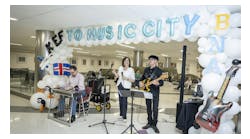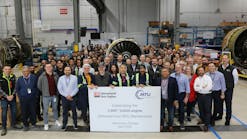Increasing costs associated with a proposed BART extension to Silicon Valley could come at the expense of a related transit proposal: a direct rail connection to Mineta San Jose International Airport.
Michael Burns, the new general manager of the Santa Clara Valley Transportation Authority, recommended Friday that the rail connection between the planned end of the BART line in Santa Clara and the airport be put on indefinite hold.
Last month, the transit authority announced that an increase in projected ridership on the BART line would mean an additional $450 million in expenses for extra train cars and parking structures next to stations. That's roughly the same amount needed to build the rail link to the airport.
So, replacing the pricey people mover with much cheaper buses between BART and the airport is part of Burns' proposal. It would make hoped-for future dollars -- from both the existing half-cent Measure A sales tax approved by voters in 2000 and another quarter-cent measure proposed for the November 2006 ballot -- equal expenses.
Plans aren't far enough along to tell what the actual impact will be on passengers.
``If they go straight from BART into the terminal, it can be as fast as a people mover,'' VTA chairman Joe Pirzynski said. ``I think it's a good compromise.''
The agency's latest funding scenario also calls for three new expenses that weren't part of Measure A -- increasing bus and light rail service by 24 percent over the next 15 years, more programs for the elderly and disabled, and paving county expressways and city streets. Combined with the higher BART costs, that represents $1.9 billion more than in original agency estimates.
To balance its plan, the people mover to the airport would be put on the shelf along with three other projects:
A trolley extension from East San Jose to downtown along Alum Rock Avenue and Santa Clara Street.
A light rail extension down the median of Capitol Expressway to Nieman Boulevard.
And electrifying Caltrain between San Jose and Gilroy.
``I see this as a conservative but realistic appraisal of what can be done,'' Pirzynski said. ``I'm confident that we will get significant if not unanimous support and will be able to take this to voters.''
Members of the transit authority's board of directors are scheduled early next month to choose which transportation measures to fund over the next 30 years, under the assumption voters will approve an additional quarter-cent sales tax. Parts of the plan, including the new dollars for local road maintenance, are at the recommendation of the business-oriented Silicon Valley Leadership Group, which has led four transportation tax ballot campaigns in Santa Clara County since 1984.
The plan calls for BART to open in 2018, a three-year delay from original projections. Palo Alto Councilwoman Yoriko Kishimoto, chair of the transit agency's policy advisory committee, liked the boost in bus operations and $717 million for pavement work, ``something which benefits the entire region.''
She also wants Caltrain service upgraded so trains can run every 15 minutes, the same frequency proposed for BART trains into Silicon Valley. And Morgan Hill Mayor Dennis Kennedy said he could support the new plan ``only if it included reverse commute trains to Gilroy.''
But the plan is sure to rankle city leaders from East San Jose, who are pushing to extend light rail. Last month Supervisor Blanca Alvarado sent a letter to the agency saying that dropping light rail plans to downtown ``is simply not acceptable.''
The existing and planned sales tax won't be enough to pay for everything promised in the 2000 Measure A campaign. It does set aside $2.5 billion in operating funds for BART, money critical if the transit authority has any hopes of securing $750 million in federal aid to help pay for the $4.7 billion BART extension.
The Federal Transit Administration has given the project a ``not recommended'' rating, saying chances of federal assistance are unlikely unless the Valley Transportation Authority can get a new source of revenue to maintain existing bus and light rail operations -- services that have been trimmed around 30 percent since 2001 -- and pay for BART operations.
That means some planned projects are on hold. They will be included in the agency's list of priorities -- but without money earmarked to pay for the work.
News stories provided by third parties are not edited by "Site Publication" staff. For suggestions and comments, please click the Contact link at the bottom of this page.





